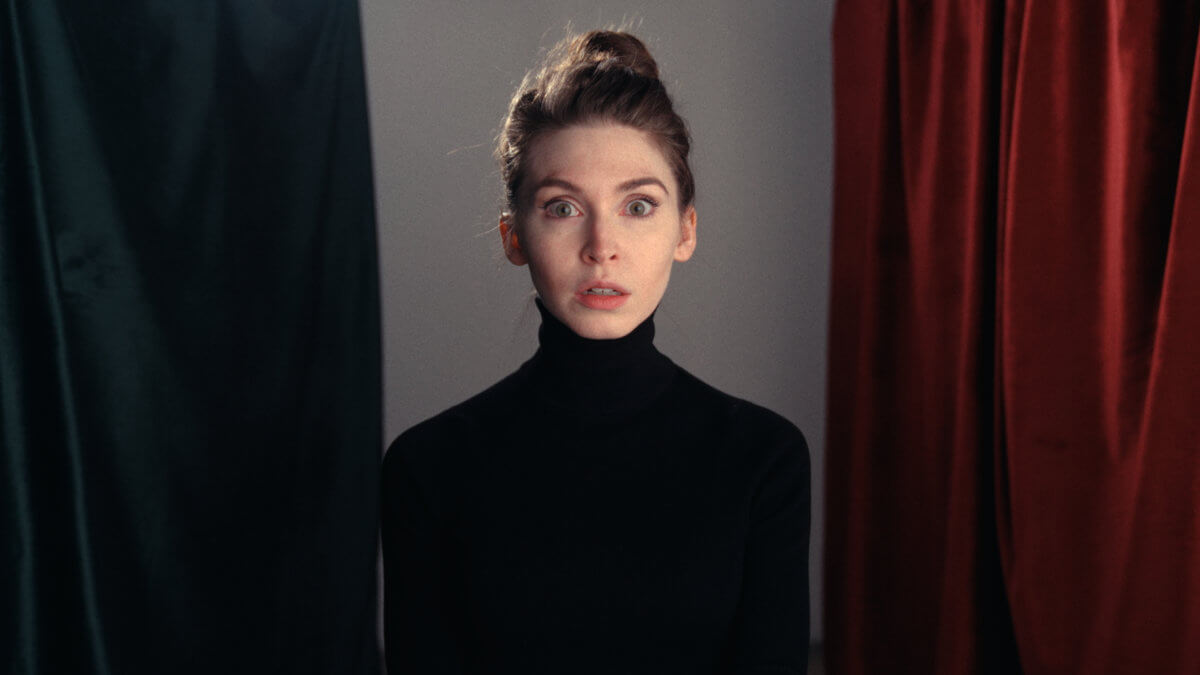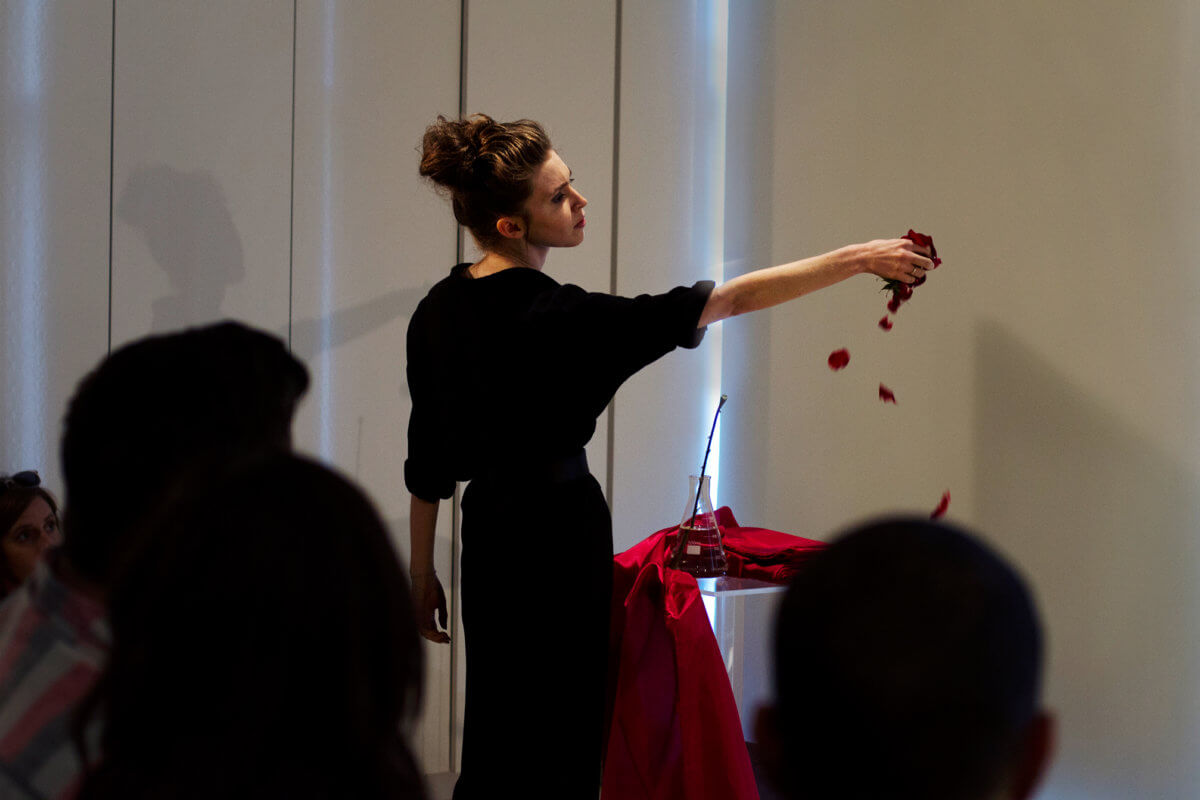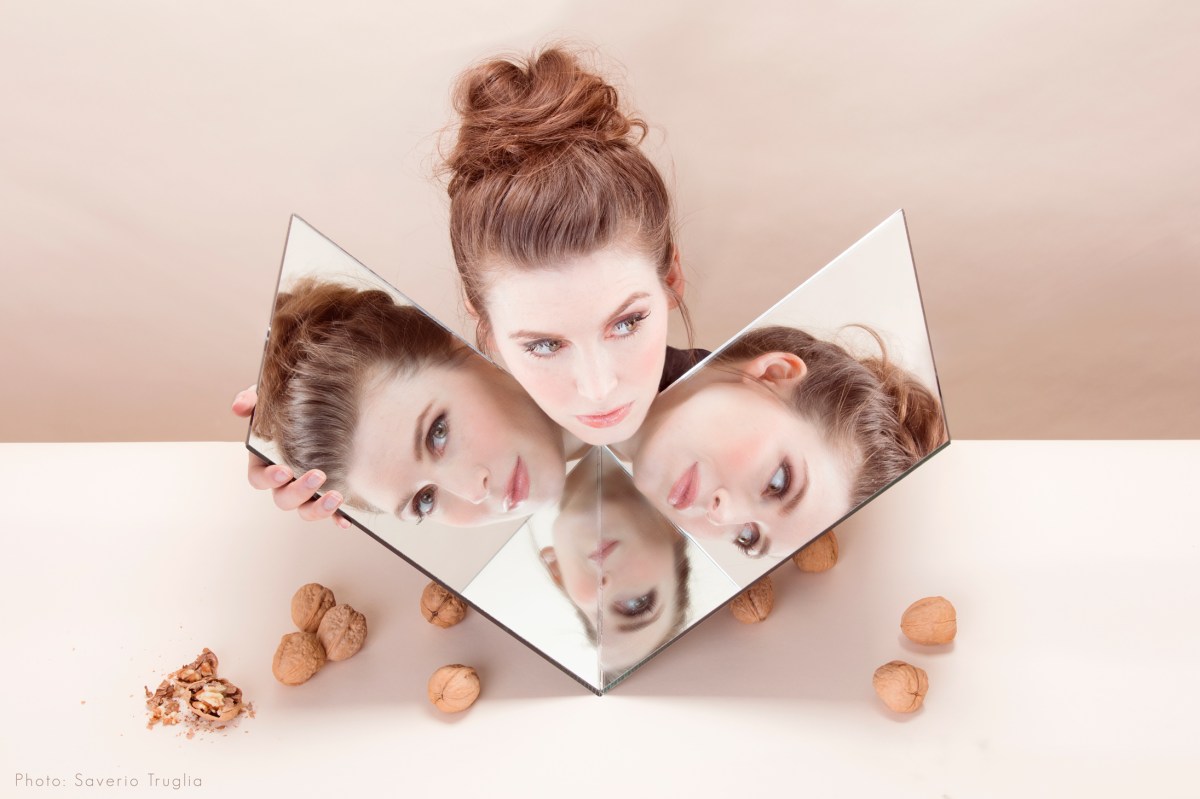Escape the surreal and a step into a world of mind-blowing magic!
This alternate reality experience — inspired by Victorian-era parlor games — isn’t taking place in another dimension. It’s happening right here in Queens at Culture Lab LIC at the Plaxall Gallery. No 3D glasses required.
Magic meets old-school machine learning (early computers) and AI (artificial intelligence), in an intriguing installation and fun, sensory illusion performance series that will surprise you!
Queens-based artist, magician and researcher Jeanette Andrews had conjured up her interactive work called “Taken by Artificial Surprise” after years of research centered around “phenomenological philosophy, contemporary cognitive science and physics.” And her life’s work — illusion — is rooted in “highlighting astonishing aspects of everyday life via moments of the seemingly impossible.”

Step inside a fascinating thought experiment! The performance aspect of this work highlights historic pieces of magic presented alongside magic developed with the help of AI, with varying levels of surprise. And you may find yourself a bit unsure as to which may be which.
“This project was inspired by my time as an Affiliate at metaLAB [at] Harvard. During this time, I was fortunate to have encountered a diversity of ideas and research, and discourse with metaLAB members also greatly assisted the ideation process,” said Andrews, a Culture Lab artist-in-residence.
The artist works closely with museums and galleries to recontextualize magic within the cultural arts and explore this craft as a performance art medium.
“Taken by Artificial Surprise” explores historic parlor magic to examine hierarchies of surprise and the human creation of surprise — as compared and contrasted to that of machines, according to Andrews, who wondered, “What might performances of the seemingly impossible demonstrate about the capabilities and limitations of both machine learning and the human mind?”

Magical themes explored by the illusionist have included invisibility; impossible objects; the relationship between scent and magic; unseen communication; and how illusions can construct reality.
“The installation is inspired by Victorian parlor games and namely, the ‘Imitation Game,’ imagined by pioneering mathematician and computer scientist Alan Turing, in his 1950 work ‘Computing Machinery and Intelligence,’” Andrews explained. “This utilized people hidden behind curtains, with an ‘interrogator’ attempting to determine their respective identities based upon a process of written questions and answers.”
She added: “Turing’s paper inspired the now-famous Turing Test and utilized the question ‘Can a machine take us by surprise?’ as a way to investigate artificial/computational intelligence.”
While in the final preparation stages for her exciting installation, the artist sat down with QNS to talk about her work, which focuses on the development of interactive magic and sensory illusions via performance, sculpture, installation and audio.
Over 27 years of specialized study and technical training in parlor and sleight-of-hand magic, has now afforded her a distinct perspective on crafting experiences with nuanced, surreal visuals and on designing objects that function completely differently than they appear. Her performances have been praised by the Chicago Tribune, PBS and The New York Times.
On view: Thursday, July 28, through Sunday, July 31. Performances: 7:30 p.m. (approx. 20-30 minutes). It’s free, and you can make reservations at eventbrite.com/e/taken-by-artificial-surprise-tickets-340798446327.
QNS: Please explain machine learning and its significance in your performance.
JA: Machine learning is an extremely complex and nuanced field. As I am an artist (and not a computer scientist), who has been lucky enough to work with those in data science and coding to assist with this project, I will reference the words of the Oxford Dictionary: the use and development of computer systems that are able to learn and adapt without following explicit instructions, by using algorithms and statistical models to analyze and draw inferences from patterns in data.
QNS: Why did you decide to embrace/explore magic and surprise?
JA: Beginning in 2017, I began to think very deeply about why certain magical effects are more surprising than others, and the psychology, science and philosophy of this. In 2019, I found the ‘Revealing ontological commitments by magic’ paper by Thomas Griffiths, which notes his thoughts on object transformations in magic that I found particularly showed a lot of insight into this topic for me. I continued my thinking on this topic and then flash forward to 2021.
In the spring of 2021, I was fortunate enough to be named an affiliate of Meta Lab at Harvard, an idea foundry, knowledge-design lab, and production studio experimenting in the networked arts and humanities. Was exposed to many ideas and the history of technology that I had not previously encountered before. A colleague there recommended that I read the 1950 Alan Turing paper on computational intelligence. One of the arguments Turing poses centers around arguments on whether or not a machine — in this context early computers — can take us humans by surprise or not.
MetaLab principal Matthew Battles had posed the question to me about whether or not the Victorian starlet-style parlor game that Turing based his thought experiment on, bore any resemblance to Victorian parlor magic and if so, if parlor magic might be an interesting way to investigate whether or not a machine can take us by surprise. My further research into this looked at how surprise seems to be a very nuanced, culturally specific and personal sensory experience that I would note as one of the defining factors for human consciousness. If only humans can experience surprise, to what level is a machine that is incapable of experiencing something, can also create it, and is that possible at all?
QNS: Describe what participants will experience.
JA: Attendees push aside a black velvet curtain across the room and enter the performance area, where they are met with 25-foot-long hanging panels of vinyl, rubber and velvet tied back with gray leatherette printed with text and diagrams from scientific studies, philosophical texts and my own notebooks.
A large table draped in black satin sits in the center of the space; perched atop it are numerous opaque and semitransparent, black acrylic boxes, all containing common yet sometimes unusual, household objects, such as wine glasses, ice buckets, snap peas, etc.
In an adjacent gallery, participants encounter an equally tall, circular hanging structure of chiffon curtains, obscuring what may or may not be inside. For more, come to Culture Lab and experience “Taken by Artificial Surprise” for yourself.
QNS: Tell readers a bit about your backstory.
JA: I presented my first magic performance at age 4 for my preschool class [and] got paid to do a magic performance for the first time at age 6. Until recently, being a full-time magician has been my lifelong profession. Now, I’m also fortunate to have an artistic practice that makes up a portion of my work as well. In my late teens, I fell in love with the history of magic and quickly learned that magic used to carry a very different cultural weight of prestige than it did in the 1990s when I was growing up. In the mid-to-late 1800s, if one said one was going to a magic performance, that was nearly on par with going to the ballet.
When I was about 14, I got interested in philosophy and started reading a lot of aesthetics and quickly discovered that a lot of the questions that philosophers were asking and exploring through the lens of art — how we perceive the objects around us, subjective experience — were very similar to a lot of the questions at the heart of magic. I have such a deep love and respect for the tradition that I come from, and it has been my lifelong goal to recontextualize magic with culture, and the combination of art and magic seemed to be the way forward.
Culture Lab, located at 5-25 46th Ave., Long Island City, is honored to host more arts programming than any other organization in New York City.



































